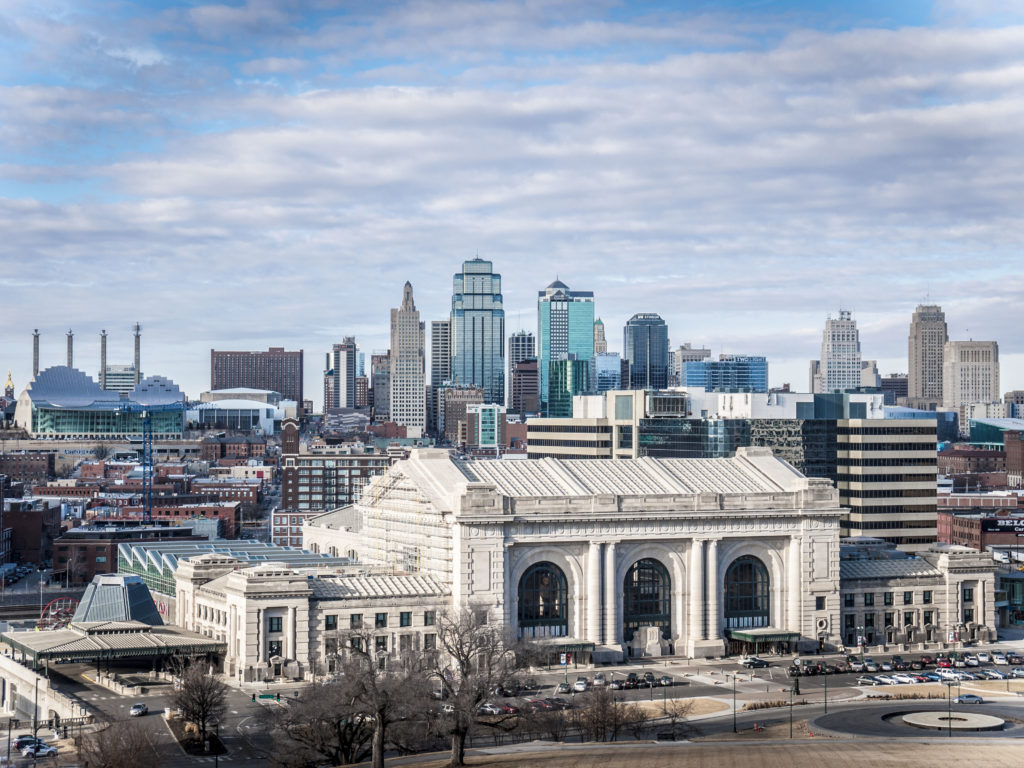
Liberty Memorial – Kansas City, MO (Missouri)
February 18, 2018
2018 © Melanie Sherman
Soon after World War I ended, a group of 40 prominent Kansas City residents formed the Liberty Memorial Association (LMA) to create a memorial to those who had served in the war. They chose lumber baron and philanthropist Robert A. Long, who had personally given a large sum of money, as president. Others included:
- James Madison Kemper was treasurer of the association. For a short time in 1919 he was President of City Center Bank that was founded by his father, William T. Kemper. His brother, Rufus Crosby Kemper Sr., became president when he left to take over as president of Commerce Bancshares, also controlled by his father.
- Jesse Clyde Nichols (J.C.), a real estate developer, was a lead proponent of the Liberty Monument.
- William Volker, businessman and philanthropist, helped the city acquire the land for the memorial.
- George Kessler, designer of the landscaping at the memorial. In 1919, the LMA spearheaded a fund drive that included 83,000 contributors and collected more than $2.5 million in less than two weeks, driven by what museum curator Doran Cart has described as “complete, unbridled patriotism”. There would not be the monetary problems that plagued the Bunker Hill Monument for the American Revolutionary War in Boston a century earlier.
Groundbreaking and dedication
In attendance at the groundbreaking ceremony on November 1, 1921, were 200,000 people, including then-Vice President Calvin Coolidge, Lieutenant General Baron Jacques of Belgium, Admiral of the Fleet Lord Beatty of Great Britain, General Armando Diaz of Italy, Marshal Ferdinand Foch of France, and General of the Armies John Pershing of the United States, along with sixty thousand members of the American Legion. The local veteran chosen to present flags to the commanders was a Kansas City haberdasher, Harry S. Truman, who would later serve as 33rd President of the United States, (1945-1952). The finished monument was dedicated on November 11, 1926, by now 30th President Coolidge, in the presence of Queen Marie of Romania. Coolidge announced that the memorial “…has not been raised to commemorate war and victory, but rather the results of war and victory which are embodied in peace and liberty…. Today I return in order that I may place the official sanction of the national government upon one of the most elaborate and impressive memorials that adorn our country. The magnitude of this memorial, and the broad base of popular support on which it rests, can scarcely fail to excite national wonder and admiration.”
Renovations
- In 1935, bas reliefs by Walker Hancock of Jacques, Beatty, Diaz, Foch and Pershing were unveiled.
- In 1981-1982, corresponding to its 60th anniversary, the building revealed new exhibits under improved lighting sources.
The memorial was closed in 1994 due to safety concerns, after aging revealed problems with drainage and the original construction. Local shopping malls voluntarily helped to put part of the museum collection on display while the memorial was unavailable. When the poor condition of the building became an embarrassment for the city, Kansas City voters in 1998 passed a limited-run sales tax to support the restoration. Plans were also made at this time to expand the site with a museum to accommodate the LMA’s growing collection. Local, national and international support provided $102 million for this undertaking, ultimately revealed at its 2006 reopening. - In 2004, Congress named the Liberty Memorial museum as the nation’s official World War I Museum, and construction started on a new 80,000-square-foot (7,400 m2) expansion and the Edward Jones Research Center underneath the original memorial. The year that this was completed, Liberty Memorial was designated a National Historic Landmark (September 20, 2006).
- Another substantial renovation, with a cost estimate of $5 million was undertaken beginning in December 2011. It included $170,000 in energy-efficiency upgrades to the building as well as improvements to the artificial flame atop the tower.
- After several months of dormancy, the flame was “relit” on February 1, 2013. Other portions of the overall renovation included security upgrades along with repairs to certain limestone sections and brush removal.
- An addition planned for completion in 2018 is the Wylie Gallery, which will occupy existing unused space on the east side of the museum building. It is part of a 6.4-million-dollar upgrade made possible by a fundraising campaign coinciding with the tenth anniversary of the museum’s 2006 reopening. The gallery will house traveling exhibits from around the world.
Current designation
On December 19, 2014, President Barack Obama signed legislation recognizing it as a national memorial, which effectively redesignated the entire site as the National World War I Museum and Memorial.
Source: https://en.wikipedia.org/wiki/National_World_War_I_Museum_and_Memorial
